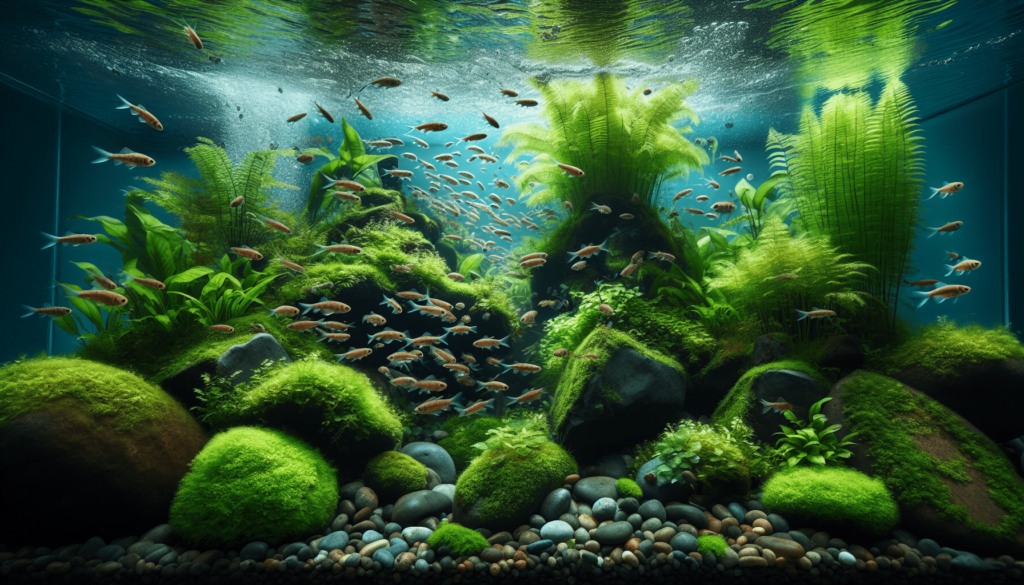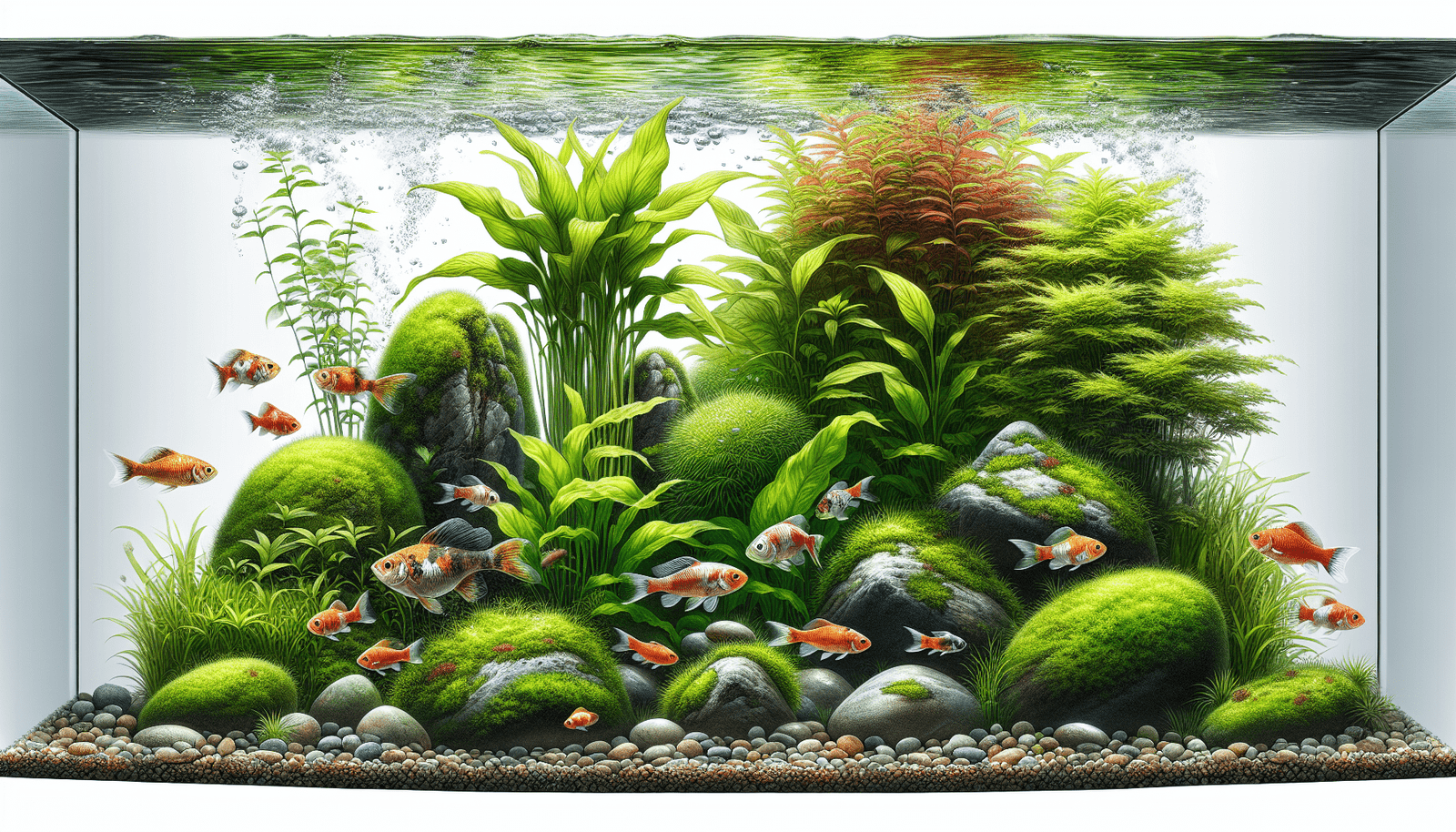You are about to dive into a world where art meets nature, in “The Art of Aquascaping in Japan.” Aquascaping is like painting, but instead of using a canvas and paints, you use water, plants, and rocks to create beautiful underwater scenes. In Japan, this has become a special and important art form, blending traditional Japanese values with modern design. You’ll learn how this unique hobby has evolved over time, discover current trends, and see why people from all around the world are fascinated by it. By the end, you’ll not only understand what aquascaping is but also appreciate the beauty and serenity it brings into people’s lives. Have you ever wondered what it would be like to create an entire underwater world in your home? Imagine little fish swimming around plants, rocks, and tiny landscapes, all designed to look like a miniature world beneath the sea. This isn’t just a dream; it’s a real hobby called aquascaping that many people enjoy, especially in Japan.
What is Aquascaping?
Aquascaping is like gardening, but underwater. You use plants, rocks, wood, and sometimes even art pieces to create beautiful, tiny landscapes inside aquariums. These underwater gardens can be as simple or as fancy as you want, and they are designed to be a perfect home for fish and other small underwater creatures.
The Importance of Aquascaping in Japan
In Japan, aquascaping is more than just a hobby; it’s an art form. People take it very seriously, and there are even competitions to see who can create the most beautiful and imaginative aquascape. It’s a way for people to express their creativity and love for nature, all while making a cozy home for fish.
The Journey Through History
How Did It All Begin?
Aquascaping has its roots in gardening and bonsai, which are also popular in Japan. The concept of creating a little piece of nature to enjoy indoors has been around for hundreds of years. It wasn’t until the 20th century, however, that people started doing it underwater.
The Pioneers
One of the key figures in aquascaping is Takashi Amano, a Japanese photographer, and aquarist who popularized the art form around the world. He introduced new techniques and plants that transformed how people thought about aquariums. His work showed that an aquarium could be more than just a tank; it could be a living, breathing underwater landscape.

Exploring Modern Aquascaping
What are the Current Trends?
Nowadays, aquascaping has become very sophisticated. People use all sorts of plants and decorations to create stunning underwater scenes. Some of the popular styles include:
- Nature Aquariums: These mimic real-life landscapes like mountains, forests, and even rivers.
- Iwagumi: This style focuses on rocks and is very minimalist. It often uses a few key plants to create a serene, simple look.
- Dutch Style: Known for its vibrant colors and carefully arranged plants, this style looks like an underwater garden with many different plant species.
Key Concepts and Definitions
Before diving deeper, let’s define some key terms you’ll often hear in aquascaping:
- Substrate: This is the material that goes at the bottom of the tank. It can be gravel, sand, or specialized soil.
- CO2 Injection: Adding carbon dioxide to the water to help plants grow faster and healthier.
- Hardscape: The non-living elements like rocks and wood used in the design.
How to Create Your Own Aquascape
Step-by-Step Guide
Creating your aquascape can be a lot of fun! Here’s a simple guide to get you started:
- Choose Your Tank: Start with a tank size you’re comfortable with. Beginners usually start with smaller tanks.
- Pick Your Substrate: Decide if you want gravel, sand, or something more specialized.
- Design Your Hardscape: Arrange your rocks and wood in a way that pleases you. This will be the foundation of your design.
- Select Plants: Choose plants that are good for beginners if you’re new to aquascaping. Some easy ones include Java Fern, Anubias, and Cryptocoryne.
- Add Water and Plants: Fill the tank with dechlorinated water and plant your chosen greens.
- Install Equipment: Add filters, heaters, and CO2 injectors if you’re using them.
- Introduce Fish: Once your plants have settled in (usually after a few weeks), add your fish.
Here’s a table to help you track your progress:
| Step | Task | Completed (Yes/No) |
|---|---|---|
| 1 | Choose Your Tank | |
| 2 | Pick Your Substrate | |
| 3 | Design Your Hardscape | |
| 4 | Select Plants | |
| 5 | Add Water and Plants | |
| 6 | Install Equipment | |
| 7 | Introduce Fish |

Examples of Stunning Aquascapes
Example 1: Takashi Amano’s Nature Aquarium
One of the most famous examples of aquascaping is the Nature Aquarium created by Takashi Amano. His work often looks like a mini jungle underwater, with a perfect balance of plants, rocks, and fish. He used specific techniques to make everything look as natural as possible.
Example 2: The Iwagumi Style Aquascape
An Iwagumi style aquascape, often found in competitions, focuses on using rocks as the main feature. The rocks are carefully placed to create a sense of harmony and balance. A few types of plants are then added to complete the scene, giving it a peaceful and serene look.
Different Perspectives on Aquascaping
The Artistic Approach
Some people view aquascaping purely as an art form. They see the tank as a canvas and the plants, rocks, and fish as their materials. The goal is to create something beautiful that can be enjoyed from both a creative and visual standpoint.
The Scientific Approach
Others approach aquascaping from a more scientific angle. They focus on the health and wellbeing of the plants and animals, researching the best ways to keep everything in balance. This includes studying the perfect amount of light, nutrients, and CO2.

The Impact of Aquascaping
Benefits for Mental Health
Having an aquascape at home can be very relaxing. Watching fish swim around and seeing the plants grow can help reduce stress and make you feel calmer. It’s like having a little piece of nature right in your living room.
Environmental Awareness
Aquascaping can also teach you a lot about the environment. By caring for your tank, you learn about ecosystems, the balance of nature, and the importance of clean water and air.
Looking to the Future
Future Trends in Aquascaping
As technology and materials improve, the possibilities for aquascaping are nearly endless. People are experimenting with new plants, lighting systems, and tank shapes to create even more amazing underwater worlds.
The Importance of Sustainability
It’s important to remember that while creating these beautiful underwater landscapes, we must also think about sustainability. This means choosing plants and fish that are bred responsibly and using materials that are eco-friendly.

Conclusion
Creating your underwater world can be a fun and rewarding experience. From understanding the basic concepts to diving into more complex trends, aquascaping offers endless opportunities for creativity and learning. So, next time you think about having a pet fish, why not consider giving them a beautiful and carefully designed home?
What kind of underwater world would you like to create? Would it look like a jungle, a mountain range, or something else entirely? The possibilities are endless, and it’s all up to you!
Feel free to share what kind of aquascape you’d like to create or ask any questions you have. Happy aquascaping!


